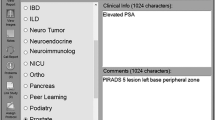Abstract
Although computerised information technology, including the Internet is broadly used and globally accessible it is still not a significant form of professional communications in diagnostic histopathology. The high cost of interactive dynamic telepathology systems makes their use limited outside the richest economies. In contrast static telepathology systems are relatively cheap but in practice their information content can be heavily biased by the choice of images sent by the consulting pathologist. The degree of this bias may be regarded simply as the amount of information transferred to a remote location expressed as a percentage of the total information present in the histological sample. We refer to this as the percentage of explicit versus implicit information. Another major source of bias may be found in the information transmitted in written or verbal discussion with a remote consultant. We have developed a system of static telepathology, the image pyramid, which attempts to minimise bias by transferring all of the information in a section to the consultant. It is inexpensive and should prove to be widely accessible.
Similar content being viewed by others
References
Weinstein RS, Bloom KJ, Rozek LS: Telepathology and the networking of pathology diagnostic services. Arch Pathol Lab Med 111:646–652, 1987.
Kayser K, Szymas J, Weinstein R: Telepathology. Telecommunication, Electronic Education and Publication in Pathology. (1st ed). Springer Verlag: Berlin, 97–150, 1999.
Wells CA, Softer C: Telepathology: a diagnostic tool for the millennium? J Pathol 191:1–7, 2000.
Raggett J, Bains W: Artificial Intelligence from A to Z. Chapman and Hall, London. 1992.
Martin E, Dusserre P, Fages A, et al: Telepathology: a new tool of pathology? Presentation of a French national network. Zentralbl Pathol 138:419–423, 1992.
Kayser K, Oberholzer M, Weisse G, et al: Long distance image transfer: First results of its use in histopathological diagnosis. APMIS 99:808–814, 1991.
Kayser K, Drileck M, Rahn W: Aids of telepathology in intraoperative histomorphological tumor diagnosis and classification. In Vivo 7:395–398, 1993.
Eide TJ, Nordrum I: Current status of telepathology. APMIS 102:881–890, 1994.
Weinstein RS, Bhattacharyya AK, Graham AR, et al: Telepathology: a ten-year progress report. Hum Pathol 28:1–7, 1997.
Gombás P, Szende B, Stotz G: Future aspects and benefits of telematic networks used in pathology for countries of central Europe (CCE). Elec J Pathol Histol; 2:963–968, 1996.
Schubert E, Gross W, Siderits RH, et al: A pathologist-designed imaging system for anatomic pathology signout, teaching, and research. Semin Diagn Pathol 11:263–73, 1994.
Bashshur RL: Telemedicine effects: cost, quality, and access. J Med Syst 19: 81–91, 1995.
Halliday BE, Bhattacharyya AK, Graham AR, et al: Diagnostic accuracy of an international static-imaging telepathology consultation service. Hum Pathol 28:17–21. 1997.
Viellefond A, Staroz F, Fabre M, et al: Martin-Pop V, Martin E, Got C, Franc B. Reliability of the anatomopathological diagnosis by static image transfer. Arch Anat Cytol Pathol 43:246–50, 1995.
Callas PW, Leslie KO, Mattia AR, et al: Diagnostic accuracy of a rural live video telepathology system. Am J Surg Pathol 21:812–819, 1997
Dunn BE, Almagro UA, Choi H, et al: Dynamic-robotic telepathology. Department of Veterans Affairs feasibility study. Hum Pathol 28:8–12, 1997.
Poremba C, Pickhardt N: Economic evaluation of telepathology. Pathologe 19: 18–24, 1998.
Sowter C, Wells CA: Telepathology: assessment of the implications and applications of telepathology for practical diagnostic pathology. [editorial] J Clin Pathol 51: 14–715, 1998.
Petersen I, Wolf G, Roth K, Schluns K: Telepathology by the Internet. J Pathol 191:8–11, 2000.
Weinstein RS, Bloom KJ, Krupinski EA et al: Human performance studies of the video microscope component of a dynamic telepathology system. Zentralbl Pathol 138:399–403, 1992.
Mairinger T, Netzer TT, Schoner W et al: Pathologist’ attitudes to implementing telepathology. J Telemed Telecare 4:41–46, 1998.
Weinberg DS, Allaert FA, Dussere P et al: Telepathology diagnosis by means of digital still images: an international validation study. Hum Pathol 27: 111–118, 1996.
Weinstein RA: Futurist meets the 21 century: love at first sight [editorial] Hum Pathol 31: 1–2, 2000.
Katt EC, Dennis SE: Web-based pathology education. Arch Pathol Lab Med 122:745–749, 1998.
Kayser K, Kayser G: Recent development of telepathology in Europe with specific emphasis on quality assurance. Anal Quant Cytol Histol 21:319–21, 1999.
Gombas P, Skepper JN, Hegyi L: The Image Pyramid digital slide in the surgical pathology.http://ultra.obuda.kando.hu/~medinfo/tp/2001.
Gombas P: Informational aspects of telepathology on routine surgical pathology Anal Cell Pathol 21:141–147, 2000.
Harris T, Leaven T, Heidger P, Kreiter C: Comparison of a virtual microscope laboratory to a regular microscope laboratory for teaching histologyAnat Rec 265:10–4, 2001.
Leong FJ, J, McGee JO: Automated complete slide digitization: a medium for simultaneous viewing by multiple pathologists. J Pathol 195:508–514, 2001.
Saltz HJ: Digital Pathology — The big pictureHum Pathol; 2000; 31:779–780.
Author information
Authors and Affiliations
Corresponding author
Rights and permissions
About this article
Cite this article
Gombás, P., Skepper, J.N. & Hegyi, L. The image pyramid system — an unbiased, inexpensive and broadly accessible method of telepathology. Pathol. Oncol. Res. 8, 68–73 (2002). https://doi.org/10.1007/BF03033705
Received:
Accepted:
Issue Date:
DOI: https://doi.org/10.1007/BF03033705




